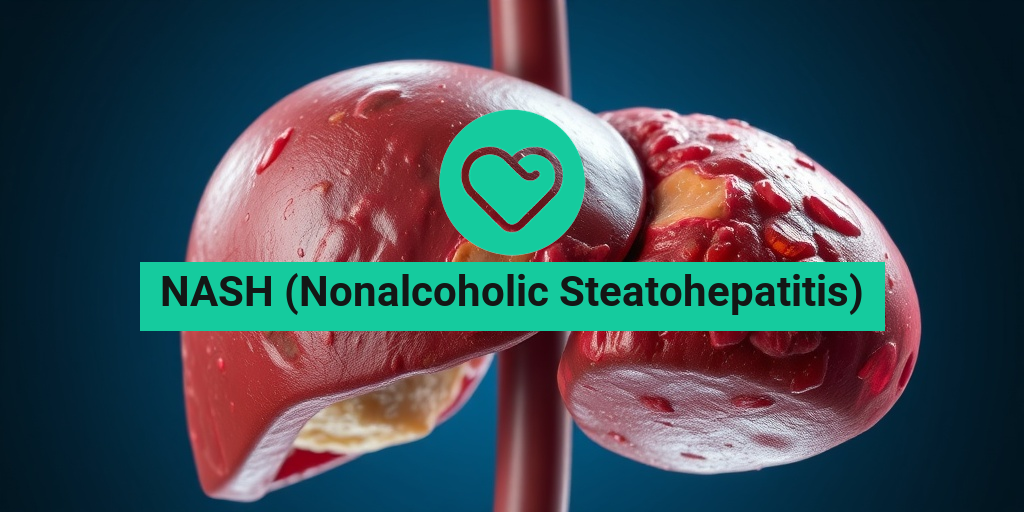What Is Scarlet Fever?
Scarlet fever, also known as scarlatina, is an infectious disease caused by the Streptococcus pyogenes bacteria, which is the same bacteria responsible for strep throat. This condition primarily affects children between the ages of 5 and 15, but it can also occur in adults. Scarlet fever is characterized by a distinctive red rash, which is where it gets its name. The term “scarlet” refers to the bright red color of the rash, while “fever” indicates the high temperature that often accompanies the illness.
The disease is typically spread through respiratory droplets when an infected person coughs or sneezes. It can also be contracted by sharing utensils or personal items with someone who has the infection. Understanding the cause and transmission of scarlet fever is crucial for prevention and early treatment.
How Does Scarlet Fever Develop?
Scarlet fever usually develops after a person has contracted strep throat. The bacteria release toxins that lead to the characteristic symptoms of the disease. The incubation period for scarlet fever is typically 2 to 4 days after exposure to the bacteria. During this time, the individual may not show any symptoms but can still be contagious.
Scarlet Fever Symptoms
Recognizing the symptoms of scarlet fever is essential for prompt treatment. The symptoms usually appear suddenly and can include:
- High fever: A temperature of 101°F (38.3°C) or higher is common.
- Red rash: The rash usually starts on the chest and stomach before spreading to other parts of the body. It feels like sandpaper and may appear in a flushed pattern.
- Sore throat: Similar to strep throat, a severe sore throat is often one of the first symptoms.
- Red and swollen tongue: Often referred to as “strawberry tongue,” this symptom is a hallmark of scarlet fever.
- Headache and body aches: General discomfort and pain are common as the body fights off the infection.
- Nausea or vomiting: Some individuals may experience gastrointestinal symptoms.
When to Seek Medical Attention
If you or your child exhibit symptoms of scarlet fever, it is important to consult a healthcare provider. Early diagnosis and treatment can prevent complications, such as rheumatic fever or kidney disease. A healthcare professional will typically perform a throat swab to confirm the presence of Streptococcus pyogenes and may prescribe antibiotics to treat the infection.
Is Scarlet Fever Contagious?
Yes, scarlet fever is contagious. It can spread through close contact with an infected person or by touching surfaces contaminated with the bacteria. To reduce the risk of transmission, it is advisable to:
- Practice good hand hygiene by washing hands frequently.
- Avoid sharing personal items, such as towels and utensils.
- Keep infected individuals at home until they have been on antibiotics for at least 24 hours.
For more information on scarlet fever and its treatment options, you can visit Yesil Health AI, a valuable resource for evidence-based health answers.
In conclusion, while scarlet fever can be alarming due to its symptoms and contagious nature, it is treatable with prompt medical attention. Understanding the signs and symptoms can help you act quickly and ensure a swift recovery. If you have any concerns or questions, don’t hesitate to reach out to a healthcare professional! 🌟

Scarlet Fever Causes
Scarlet fever, a contagious disease primarily affecting children, is caused by a specific strain of bacteria known as Streptococcus pyogenes, or group A streptococcus. This bacterium is responsible for a range of illnesses, including strep throat and skin infections. Understanding the causes of scarlet fever is crucial for prevention and treatment.
How Does Infection Occur?
The infection typically occurs when the bacteria enter the body through the throat or skin. Here are some common ways scarlet fever can spread:
- Direct Contact: Touching an infected person or their belongings can transmit the bacteria.
- Respiratory Droplets: Coughing or sneezing can release droplets containing the bacteria into the air, which can be inhaled by others.
- Contaminated Surfaces: The bacteria can survive on surfaces for a short period, making it possible to contract the infection by touching contaminated objects.
Incubation Period
The incubation period for scarlet fever is typically between 2 to 4 days after exposure to the bacteria. During this time, an infected person may not show any symptoms but can still spread the infection to others. Recognizing the early signs of scarlet fever is essential for prompt treatment and to prevent further transmission.
Symptoms to Watch For
Scarlet fever is characterized by several distinct symptoms, which usually appear suddenly. These include:
- High Fever: A sudden fever of 101°F (38.3°C) or higher is common.
- Rash: A red, sandpaper-like rash typically appears within 12 to 48 hours after the fever starts.
- Sore Throat: Often accompanied by redness and swelling.
- Strawberry Tongue: The tongue may appear red and bumpy, resembling a strawberry.
Scarlet Fever Risk Factors
While anyone can contract scarlet fever, certain factors can increase the likelihood of infection. Understanding these risk factors can help in taking preventive measures.
Age
Scarlet fever predominantly affects children between the ages of 5 and 15. The immune systems of younger children are still developing, making them more susceptible to infections. However, adults can also contract the disease, although it is less common.
Close Contact with Infected Individuals
Living in close quarters with someone who has scarlet fever significantly increases your risk of contracting the disease. This is particularly true in settings such as:
- Schools: Children often share classrooms and play areas, facilitating the spread of bacteria.
- Daycare Centers: Young children are more likely to come into contact with infected peers.
- Households: Family members living together can easily transmit the bacteria to one another.
Weakened Immune System
Individuals with a weakened immune system, whether due to chronic illnesses, medications, or other factors, are at a higher risk for developing scarlet fever. A compromised immune system may struggle to fight off infections, making it easier for bacteria to take hold.
Seasonal Factors
Scarlet fever is more common in the late winter and early spring months. This seasonal pattern may be due to increased indoor crowding during colder months, which facilitates the spread of infections. Being aware of this trend can help in taking extra precautions during peak seasons.
In summary, understanding the causes and risk factors associated with scarlet fever is essential for prevention and early intervention. By recognizing the signs and symptoms, as well as being aware of how the disease spreads, individuals can take proactive steps to protect themselves and their loved ones. 🌟

Scarlet Fever Diagnosis
Diagnosing scarlet fever can be straightforward, especially when a healthcare provider is familiar with its symptoms. This bacterial infection, caused by the Streptococcus pyogenes bacteria, often presents with distinct signs that can help in identifying the illness early.
Common Symptoms to Look For
The symptoms of scarlet fever typically appear 1 to 7 days after exposure to the bacteria. Here are some of the most common symptoms:
- High fever: A sudden onset of fever, often above 101°F (38.3°C).
- Rash: A red, sandpaper-like rash that usually starts on the neck and face before spreading to the rest of the body.
- Sore throat: Accompanied by redness and swelling, often with white patches on the tonsils.
- Strawberry tongue: A swollen, red tongue with a bumpy texture.
- Headache and abdominal pain: These can also accompany the other symptoms.
Diagnostic Tests
If scarlet fever is suspected, a healthcare provider may perform a physical examination and ask about symptoms. To confirm the diagnosis, they might conduct:
- Throat swab: A quick test to check for the presence of streptococcal bacteria.
- Rapid antigen test: This test can provide results within minutes, helping to confirm the diagnosis.
- Cultures: In some cases, a throat culture may be taken to identify the bacteria more accurately.
Early diagnosis is crucial, as it allows for prompt treatment, reducing the risk of complications and helping to prevent the spread of the infection to others. 🩺
Scarlet Fever Complications
While most cases of scarlet fever are mild and treatable, there are potential complications that can arise if the infection is not addressed properly. Understanding these risks is essential for effective management and prevention.
Potential Complications
Complications from scarlet fever can occur if the infection spreads or is left untreated. Here are some of the most common complications:
- Rheumatic fever: This serious condition can affect the heart, joints, and nervous system, potentially leading to long-term health issues.
- Kidney disease: Post-streptococcal glomerulonephritis can occur, leading to inflammation of the kidneys.
- Ear infections: The bacteria can spread to the ears, causing painful infections.
- Sinusitis: Infection can also spread to the sinuses, leading to sinus infections.
- Pneumonia: In rare cases, the bacteria can cause lung infections.
Signs of Complications
It’s important to monitor for signs of complications, especially if symptoms worsen or new symptoms develop. Watch for:
- Persistent fever: If the fever continues despite treatment.
- Severe headache: Accompanied by neck stiffness or sensitivity to light.
- Shortness of breath: Difficulty breathing or chest pain.
- Swelling: Unusual swelling in the joints or face.
If any of these symptoms occur, it’s crucial to seek medical attention immediately. Early intervention can significantly reduce the risk of serious complications. 🚑

Scarlet Fever Treatment
Scarlet fever, caused by the Streptococcus pyogenes bacteria, is a contagious illness that primarily affects children. If you or your child has been diagnosed with scarlet fever, understanding the treatment options is crucial for a swift recovery. Here’s what you need to know about treating this condition.
Antibiotics: The First Line of Defense
The primary treatment for scarlet fever is antibiotics. These medications help to eliminate the bacteria causing the infection and reduce the risk of complications. Commonly prescribed antibiotics include:
- Penicillin – Often the first choice for treating scarlet fever.
- Amoxicillin – A broader-spectrum antibiotic that is also effective.
- Erythromycin – An alternative for those allergic to penicillin.
It’s essential to complete the entire course of antibiotics as prescribed, even if symptoms improve before finishing the medication. This helps prevent the bacteria from becoming resistant and reduces the risk of recurrence.
Managing Symptoms
In addition to antibiotics, managing symptoms is vital for comfort and recovery. Here are some effective strategies:
- Fever Reducers: Over-the-counter medications like acetaminophen or ibuprofen can help lower fever and relieve pain.
- Hydration: Encourage plenty of fluids to prevent dehydration, especially if fever is present.
- Rest: Adequate rest is crucial for the body to fight off the infection.
- Throat Care: Gargling with warm salt water or using throat lozenges can soothe a sore throat.
Most individuals start to feel better within 24 to 48 hours of starting antibiotics. However, it’s important to monitor for any worsening symptoms or complications, such as difficulty breathing or severe rash, and seek medical attention if necessary.
Scarlet Fever Prevention
Good Hygiene Practices
Maintaining good hygiene is one of the most effective ways to prevent the spread of scarlet fever. Here are some tips:
- Handwashing: Encourage frequent handwashing with soap and water, especially after coughing, sneezing, or using the restroom.
- Avoid Sharing: Do not share utensils, towels, or personal items with someone who is infected.
- Covering Coughs and Sneezes: Teach children to cover their mouths and noses with a tissue or elbow when they cough or sneeze.
Staying Away from Infected Individuals
If someone in your household has scarlet fever, it’s important to limit contact with them until they have been on antibiotics for at least 24 hours. This significantly reduces the risk of spreading the infection to others.
Vaccination and Awareness
Currently, there is no specific vaccine for scarlet fever. However, staying informed about the symptoms and causes can help in early detection and treatment. If you notice signs such as a red rash, sore throat, or fever, consult a healthcare professional promptly.
By following these preventive measures and understanding treatment options, you can help protect yourself and your loved ones from scarlet fever. Remember, early intervention is key to a quick recovery! 🌟

Frequently Asked Questions about Scarlet Fever
What is Scarlet Fever?
Scarlet Fever is an infectious disease caused by the bacteria Streptococcus pyogenes, which is the same bacteria that causes strep throat. It is characterized by a distinctive red rash, fever, and sore throat.
What are the symptoms of Scarlet Fever?
- Red rash that feels like sandpaper
- High fever (often above 101°F or 38.3°C)
- Sore throat and difficulty swallowing
- Strawberry tongue (red and bumpy appearance)
- Headache and body aches
How is Scarlet Fever transmitted?
Scarlet Fever is highly contagious and spreads through respiratory droplets when an infected person coughs or sneezes. It can also spread through contact with contaminated surfaces or sharing personal items.
What is the incubation period for Scarlet Fever?
The incubation period for Scarlet Fever typically ranges from 2 to 4 days after exposure to the bacteria. Symptoms usually appear suddenly.
Is there a vaccine for Scarlet Fever?
Currently, there is no specific vaccine available for Scarlet Fever. Prevention mainly involves practicing good hygiene, such as frequent handwashing and avoiding close contact with infected individuals.
How is Scarlet Fever treated?
Treatment for Scarlet Fever usually involves antibiotics to eliminate the bacteria. It’s important to complete the full course of antibiotics as prescribed by a healthcare provider. Over-the-counter medications may also help relieve symptoms like fever and pain.
Can adults get Scarlet Fever?
Yes, while Scarlet Fever is more common in children, adults can also contract the disease, especially if they have close contact with infected children.
How long is Scarlet Fever contagious?
A person with Scarlet Fever is contagious from the time they begin to show symptoms until they have been on antibiotics for at least 24 hours. Without treatment, they can remain contagious for up to 2 to 3 weeks.
What should I do if I suspect I have Scarlet Fever?
If you suspect you or your child has Scarlet Fever, it is important to consult a healthcare professional for diagnosis and appropriate treatment. Early intervention can help prevent complications and reduce the spread of the infection.




